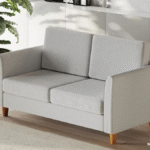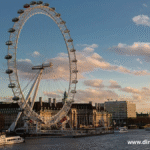Ever wondered how big 1 meter really is? Spoiler: it’s not as mysterious as it sounds but it might surprise you. Picture this: you brag about running a marathon, but your friend points out you’ve only jogged about things that are 1 meter long fifteen of them, to be exact. Suddenly, perspective hits harder than a falling meter stick! From guitars to doorways, this universal unit sneaks into your daily life more often than your coffee breaks. So buckle up (or stretch out your arms), because we’re about to explore 15 common things that are one meter long or big with plenty of laughs along the way.
What Does One Meter Really Look Like?
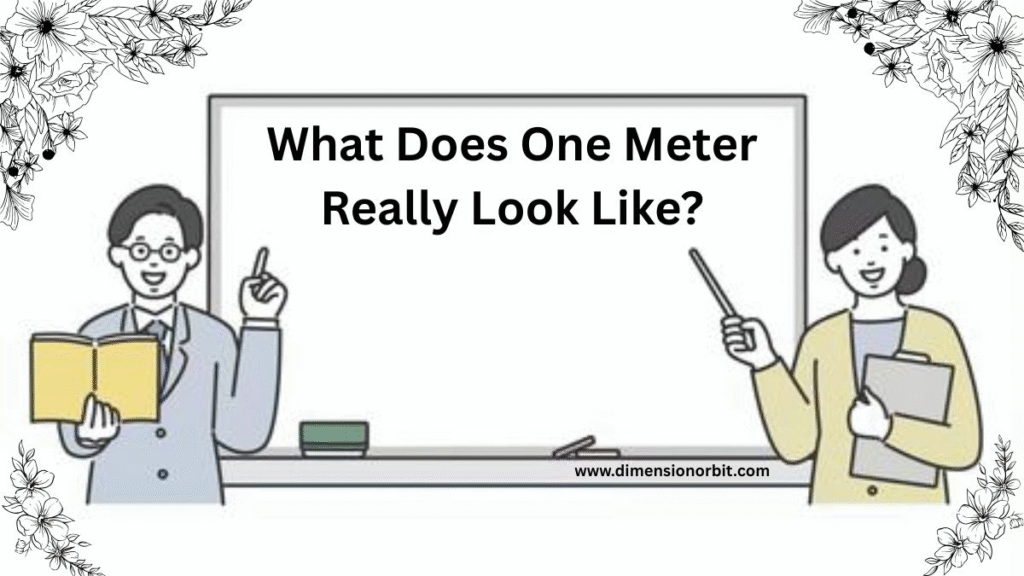
Have you ever tried to picture what one meter actually looks like?
It sounds simple until you need to imagine it in real life. Most people know 1 meter equals 100 centimeters, or roughly 3.28 feet, but those numbers don’t always translate easily into something tangible.
Whether you’re decorating your home, packing luggage, or comparing products online, being able to visualize one meter can save time and prevent mistakes. This guide explores 15 common things that are one meter long or big, so you can develop a natural feel for how long a meter really is.
Understanding a Meter: The Basics
In the metric system, the meter is the standard unit of length.
It’s used globally across science, education, engineering, and daily life. In simple terms, one meter measures the distance light travels in a vacuum in 1/299,792,458 of a second a definition that ensures incredible precision.
Here’s how one meter compares with familiar measurements:
| Unit | Conversion | Notes |
|---|---|---|
| 1 Meter | 100 Centimeters | Metric system base |
| 1 Meter | 1,000 Millimeters | Used in technical drawings |
| 1 Meter | 39.37 Inches | Everyday conversion |
| 1 Meter | 3.28 Feet | Approximate for visualization |
| 1 Meter | 1.09 Yards | Slightly longer than a yard |
When you think of how big is a meter, imagine it as the width of an interior doorway or the distance from your fingertips to the middle of your chest.
A Short History of the Meter
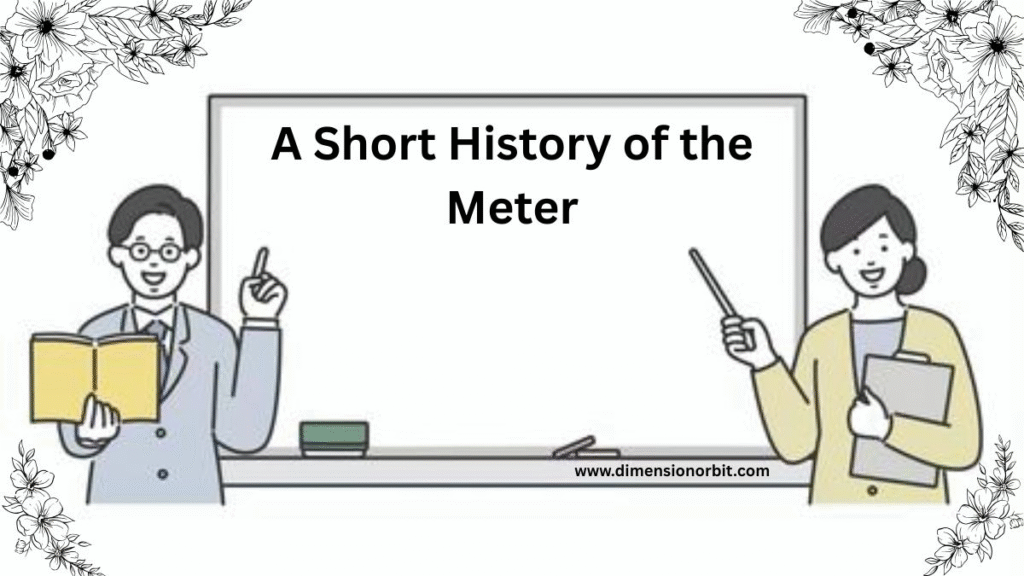
The meter has an interesting origin story. It was first defined in the late 18th century during the French Revolution as one ten millionth of the distance from the equator to the North Pole along a meridian line through Paris.
Later, scientists created a physical standard a platinum iridium bar kept in Paris as the world’s reference for one meter.
By 1983, technological progress allowed a much more precise and universal definition:
“A meter is the length of the path traveled by light in vacuum during a time interval of 1/299,792,458 of a second.”
This redefinition tied the meter to a fundamental constant of nature, making it reliable and consistent across the globe.
Why the Meter Still Matters Today

It’s easy to overlook how deeply the meter shapes our world. Yet, it plays a vital role in almost everything we build, use, and measure:
- In construction: Architects and engineers use meters to ensure designs fit perfectly within spaces.
- In manufacturing: Machines are calibrated to metric dimensions to maintain quality and safety standards.
- In science: Measurements like speed, distance, and wavelength all depend on the meter.
- In daily life: From room layouts to sports fields, understanding one meter helps you gauge scale accurately.
So, when you think of things that measure one meter, you’re looking at the foundation of how the modern world stays precise and consistent.
How to Visualize One Meter Without Tools

You don’t always need a measuring tape to estimate one meter.
Try these simple, practical ways to visualize it:
- Your arm span – The distance from your nose to your fingertips when you stretch out one arm is close to a meter for many adults.
- A large doorway – Standard interior door widths range from 90 cm to 1 m.
- A single step – One adult stride usually measures between 70 cm and 90 cm add a bit more to reach one meter.
- A guitar or longboard – Many household items hover around that length.
By practicing with these visual cues, you’ll train your brain to recognize how big one meter really is without needing tools.
How Long Is 5 Meter? 15 Everyday Items
The Meter in Everyday Life

In design and ergonomics, a one-meter length is surprisingly common because it’s tied to human proportions.
Furniture, tools, and technology often use the meter as a baseline for practicality and comfort.
For instance:
- Desks, countertops, and mirrors often measure close to 1 m in width or height.
- Sports gear like baseball bats, yoga mats, or tripods are designed with the same scale in mind.
- Even in travel, luggage dimensions frequently fall within this range.
These everyday uses make one meter a familiar but essential standard, even if you don’t realize it.
15 Common Things That Are One Meter Long or Big
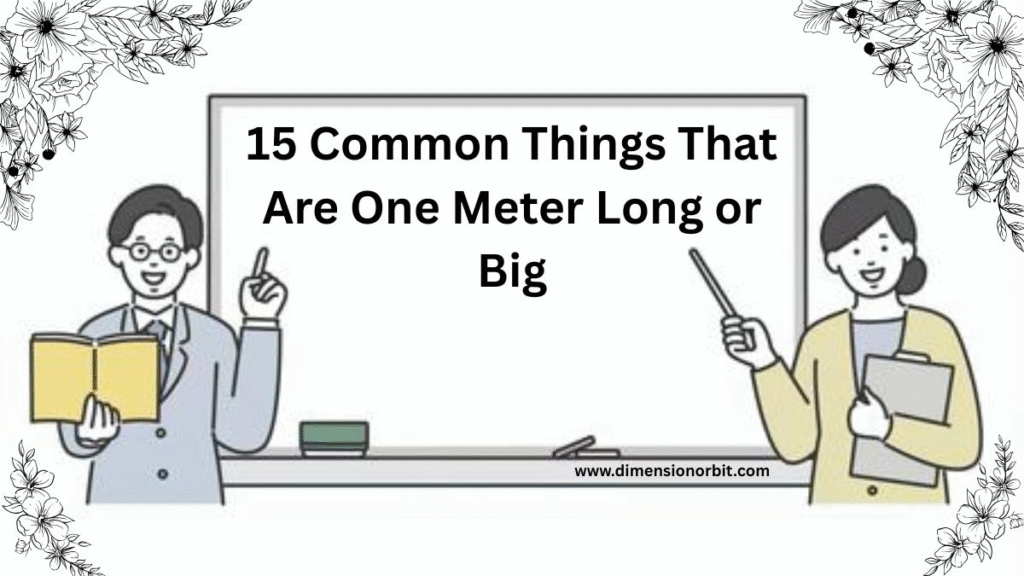
Below is a curated list of real world items close to one meter in length. Each helps you understand the scale of a meter in context.
Household & Furniture
- Meter Stick – The definitive one-meter reference tool used in classrooms and workshops.
- Kitchen Counter Height – Standard height ranges between 90–100 cm, about one meter tall.
- Office Desk Depth – Most desks measure around 1 m deep for comfortable workspace balance.
- Doorway Width – Interior doors typically range from 0.9–1 m wide.
- Wall-Mounted Mirror – Large mirrors designed for hallways or bedrooms are usually about one meter wide.
Sports & Leisure
- Guitar (Full Size) – A standard acoustic or electric guitar measures roughly 1 m from headstock to base.
- Baseball Bat – Professional bats are around 86–100 cm long.
- Skateboard or Longboard – Longboards stretch to nearly a meter for added stability.
- Yoga Mat (Large) – Wide mats often measure 100 cm across for comfort during poses.
- Child’s Bicycle – From handlebars to back wheel, many small bikes span roughly one meter.
Tools, Travel & Tech
- Large Suitcase (Upright) – Many checked-in suitcases stand about 1 m tall.
- Garden Hose Section – Hoses are often sold in 1 m increments for easy customization.
- Folding Ruler – Common carpenter’s rulers unfold to exactly one meter.
- Medium Tripod – Compact tripods extend to about one meter in height.
- 40-Inch TV or Monitor – The diagonal of a 40″ screen equals roughly 1 m (101.6 cm).
How Accurate Are These Measurements?
While many one meter examples are quite precise, small variations exist.
Here’s a summary comparing typical lengths and their proximity to one meter:
| Object | Typical Length | Approx to 1 m |
|---|---|---|
| Kitchen Countertop | 90–100 cm | Close |
| Guitar | 100 cm | Exact |
| Longboard | 100 cm | Exact |
| Large Suitcase | 95–110 cm | Close |
| 40″ TV | 101.6 cm | Exact |
These measurements demonstrate that while one meter objects may differ slightly in size, they remain excellent visual guides for understanding scale.
Why It Helps to Visualize a Meter

Being able to estimate one meter accurately has real life advantages:
- Home Improvement – When hanging shelves or placing furniture, knowing how long a meter is prevents awkward layouts.
- Online Shopping – Product listings in meters or centimeters become instantly clearer.
- Travel Planning – Understanding suitcase height or bag size can prevent airline check in issues.
- Spatial Awareness – Knowing how big one meter feels enhances your sense of proportion in rooms and projects.
For example, realizing your “one meter wide table” isn’t as large as it sounds can save you from buying something that feels too small in your space.
Metric vs Imperial: Understanding the Difference
A frequent question is: “Is one meter the same as a yard?”
Not quite. A yard equals 0.9144 meters, meaning one meter is about 1.09 yards a noticeable difference.
Here’s a quick conversion chart for reference:
| Unit | Equivalent | Notes |
|---|---|---|
| 1 Meter | 3.28 Feet | Most common conversion |
| 1 Meter | 39.37 Inches | Useful for shopping |
| 1 Meter | 1.09 Yards | Slightly longer than a yard |
Knowing these differences helps when comparing metric vs imperial systems and improves your ability to visualize lengths across regions.
The Meter in Science, Engineering, and Education

Beyond its practical uses, the meter serves as a scientific cornerstone:
- In metrology (the science of measurement), it ensures accuracy and reproducibility across all experiments.
- In engineering, it standardizes blueprints and design dimensions.
- In education, it introduces children to spatial reasoning and proportional understanding.
Every time you measure something “one meter long,” you’re connecting to a system built on centuries of precision and refinement.
Cultural Context of the Meter
The meter also appears in language, sports, and everyday expressions:
- Sports: The width of a soccer goal, the distance between hurdles, or swimming pool lengths are all based on meters.
- Language: Phrases like “keep a meter apart” became common in recent years, reflecting its cultural importance.
- Design: International design standards often use one meter as a starting block for ergonomic proportions.
The meter is more than a number it’s part of how societies measure, move, and interact with the world.
Why People Struggle to Estimate a Meter
Even though it’s common, many people still misjudge what one meter really looks like. Here’s why:
- Perception bias – Large open spaces make distances seem shorter.
- Unit switching – If you grew up with inches or feet, meters feel abstract.
- Context confusion – Objects in cluttered spaces seem larger or smaller than they are.
Quick Fixes
- Keep a folding ruler or mark one meter on a wall for quick reference.
- Compare unknown objects to something familiar like a desk or guitar.
- Practice measuring a few household items to build your “meter sense.”
The Future of Measuring a Meter

Measurement is evolving rapidly, but the meter remains central.
Modern tools like AR apps, laser sensors, and 3D scanners allow anyone to measure precisely to the millimeter. Yet, every one of these technologies still begins with the meter as its foundation.
In the future, we’ll continue refining accuracy, but the concept of “things that are one meter long” will always serve as an accessible, human scale reference point.
Digital tool
Digital tools like Feet and Inches Calculator can convert inches to centimeters or feet instantly. Many smartphone apps now offer augmented reality measuring features, allowing you to gauge objects virtually and compare them to known lengths.
FAQs
What are some things that are one meter long?
Common things that are one meter long include items like a guitar, a longboard, a yoga mat, a wall mirror, and even the depth of a standard office desk. These examples make it easier to visualize what one meter looks like in daily life.
How big is one meter compared to everyday objects?
A one-meter length is about the width of a standard doorway or the distance from your fingertip to the middle of your chest. Imagine stacking three 30 centimeter rulers end to end that’s roughly one meter.
Is one meter the same as a yard?
Not quite. A yard measures 0.9144 meters, which means one meter is slightly longer about 1.09 yards. When switching between metric and imperial systems, remember that the meter is about 10% longer than a yard.
How can I visualize a meter without a ruler or tape measure?
You can estimate how long is one meter by using your body or nearby items. For example, stretch one arm from your shoulder to your fingertips that distance is close to a meter. A kitchen counter or large suitcase is also about the same length.
Why do people use the meter as a standard unit of measurement?
The meter is part of the metric system, the world’s most widely used measurement standard. It’s precise, easy to convert (1 m = 100 cm), and forms the foundation for global trade, science, engineering, and education.
What everyday household items measure about one meter?
Household one meter objects include mirrors, countertops, tripods, folding rulers, and even large TVs (around 40 inches diagonally). These items naturally fit human proportions, which is why designers often base their dimensions around one meter.
Why is it useful to understand one meter measurements?
Recognizing one meter examples helps you estimate distances accurately whether hanging shelves, choosing furniture, or buying luggage. It also sharpens spatial awareness, making everyday tasks like decorating or packing much easier.
Can I measure one meter using steps or body length?
Yes! One average adult step is roughly 0.8 to 0.9 meters, so take a slightly longer stride to cover a full meter. You can also use your arm span many adults’ arm length from fingertip to fingertip is close to one meter.
How long is one meter in feet and inches?
One meter equals 3.28 feet or 39.37 inches. Knowing this conversion helps when you’re reading measurements in imperial units, especially for home improvement or online shopping.
What are some fun ways to remember how big a meter is?
Think of it this way: a meter is about the size of a guitar, a large dog, or your average skateboard. Once you start noticing items that are one meter long, you’ll spot them everywhere and maybe even start measuring your world one meter at a time!
Final Thoughts
Understanding how long one meter really is gives you a clearer sense of scale in everyday life. The meter isn’t just a scientific measurement it’s the invisible ruler shaping the spaces, designs, and tools we use every day. From architecture to technology, the meter connects us through a universal language of precision and practicality.
So the next time you see a measurement labeled “1 meter,” you won’t just read it you’ll feel it. Grasping this simple yet powerful unit sharpens your perception, boosts your confidence in estimating distances, and helps you navigate the world with a little more accuracy and ease.

Jhon AJS, the author of Dimension Orbit, is an experienced blogger fascinated by the mysteries of existence. He explores every type of dimension from scientific to spiritual with clarity and creativity. Jhon’s engaging writing style invites readers to think deeper, question reality, and discover new perspectives on the universe.



